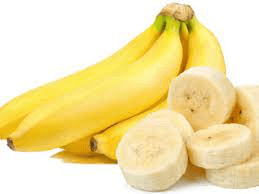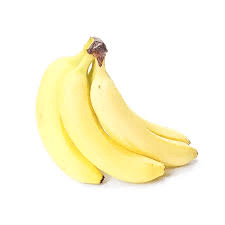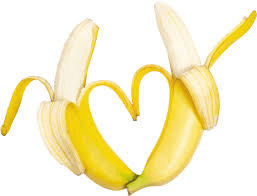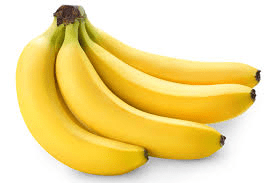Banana fruits coloration progresses from green to yellow as it ripens, a process influenced by the breakdown of chlorophyll and the production of carotenoids like beta-carotene. This transformation is pivotal in determining the fruit’s sweetness and texture.
At its core, the banana harbors a series of seedless, cream-colored pulp. Unlike many fruits, bananas reproduce asexually through offshoots from the plant’s underground rhizome, ensuring genetic uniformity among successive generations.
Nutritionally, bananas are a powerhouse. They are a rich source of essential vitamins such as vitamin C, vitamin B6, and potassium. These nutrients play critical roles in maintaining cellular function, nervous system health, and electrolyte balance within the body.
Moreover, bananas boast a considerable carbohydrate content, predominantly in the form of natural sugars like sucrose, fructose, and glucose, which provide quick energy when consumed.
The banana plant itself is a herbaceous flowering plant, not a tree, characterized by its pseudostem—a collection of tightly packed leaf bases. These stems emerge from a structure known as a corm, which anchors the plant in the soil and facilitates nutrient uptake. Each plant typically produces a single bunch of bananas, often weighing between 30 to 50 pounds (14 to 23 kilograms) and containing anywhere from 50 to 150 individual fruits.
Culturally and economically, bananas hold significant importance worldwide. They are one of the most consumed fruits globally, enjoyed both fresh and processed into various products such as banana chips and purees.
Bananas are cultivated in over 135 countries, with the majority of production centered in tropical regions such as Latin America, Southeast Asia, and Africa. The fruit’s versatility extends beyond mere consumption; banana leaves are utilized for cooking, serving as eco-friendly plates and wraps in many cuisines.
The banana fruit embodies a blend of nutritional richness, botanical uniqueness, and global significance. From its protective peel to its nutrient-packed flesh and widespread cultivation, bananas epitomize both biological diversity and culinary utility. As researchers continue to explore the fruit’s genetic makeup and agricultural potential, bananas remain a staple food source and a symbol of tropical abundance across the globe.
The Economic Importance and Uses of Banana Fruits

1. Staple Food: Bananas are a staple food in many countries, providing essential nutrition. For example, in Uganda, bananas are a primary food source and are used in dishes like matoke.
2. Export Commodity: Bananas are a major export product for countries like Ecuador, the Philippines, and Costa Rica, contributing significantly to their economies.
3. Nutritional Value: Bananas are rich in potassium, vitamins C and B6, and dietary fiber, making them a nutritious food choice.
4. Processed Foods: Bananas are used in a variety of processed foods, including banana chips, banana bread, and smoothies.
5. Baby Food: Banana puree is a common ingredient in baby foods due to its easy digestibility and nutritional benefits.
6. Animal Feed: Overripe or damaged bananas are often used as feed for livestock, providing an economical and nutritious option for farmers.
7. Cosmetic Industry: Banana extracts are used in skincare products for their moisturizing and antioxidant properties.
8. Biodegradable Packaging: Banana leaves are used as eco-friendly packaging material in many cultures, reducing the use of plastic.
9. Wine and Beer Production: In some regions, bananas are fermented to produce alcoholic beverages like banana wine and banana beer.
10. Flour Production: Dried bananas can be ground into banana flour, a gluten-free alternative for baking and cooking.
11. Natural Sweeteners: Bananas are used as a natural sweetener in recipes, reducing the need for added sugar.
12. Medicinal Uses: In traditional medicine, bananas are used to treat conditions like ulcers and diarrhea due to their soothing properties.
13. Snacks: Bananas are a popular snack food, eaten fresh or dried and packaged for convenience.
14. Juice and Beverages: Banana juice and smoothies are popular beverages, known for their refreshing taste and health benefits.
15. Cultural Significance: Bananas play a role in various cultural and religious rituals, particularly in tropical regions.
16. Composting: Banana peels and other waste can be composted to create nutrient-rich soil for gardening and agriculture.
17. Fiber Production: Banana plants are a source of fiber for making textiles and other products.
18. Dessert Ingredient: Bananas are widely used in desserts like banana split, banana pudding, and banana cake.
Read Also: Sheep gene insights could help farmers breed healthier animals
The Products and By-products That Can Be Derived From Banana Fruits

1. Fresh Bananas: Consumed directly as a healthy snack.
2. Banana Chips: Sliced and fried or dried bananas, used as a snack.
3. Banana Bread: A popular baked good made with ripe bananas.
4. Banana Puree: Used in baby food and various recipes.
5. Banana Flour: Made from dried and ground bananas, used as a gluten-free alternative in baking.
6. Banana Juice: Extracted from bananas and consumed as a beverage.
7. Banana Wine: An alcoholic beverage made by fermenting bananas.
8. Banana Beer: A traditional alcoholic drink in some cultures made from fermented bananas.
9. Skincare Products: Banana extracts used in creams, lotions, and masks.
10. Natural Sweeteners: Bananas used to sweeten foods naturally.
11. Animal Feed: Overripe or damaged bananas used to feed livestock.
12. Compost: Banana peels and waste used to create nutrient-rich compost.
13. Banana Smoothies: Blended bananas with other fruits and ingredients.
14. Banana Pudding: A popular dessert made with bananas, custard, and cookies.
15. Banana Leaves: Used as biodegradable packaging and serving plates.
16. Banana Fiber: Extracted from the plant for making textiles and ropes.
17. Banana Candy: Made by drying and sweetening bananas.
18. Banana Vinegar: Produced by fermenting banana juice.
Read Also: 17 Medicinal Health Benefits Of Mucuna pruriens (Monkey Tamarind)
Frequently Asked Questions (FAQ’s) About Banana Fruits

1. What are the nutritional benefits of bananas? Bananas are rich in potassium, vitamins C and B6, and dietary fiber, which support heart health, immune function, and digestion.
2. How can bananas be used in cooking? Bananas can be eaten fresh, baked into breads and cakes, blended into smoothies, and used in desserts like banana pudding.
3. Are bananas good for weight loss? Yes, bananas are low in calories and high in fiber, making them a good option for weight loss when eaten in moderation.
4. Can bananas be used in skincare products? Yes, banana extracts are used in skin care products for their moisturizing and antioxidant properties.
5. How are bananas processed into flour? Bananas are dried and then ground into a fine powder to produce banana flour, a gluten-free baking alternative.
6. What are banana chips? Banana chips are sliced and fried or dried bananas, often seasoned and eaten as a snack.
7. How are bananas used in traditional medicine? Bananas are used to treat ulcers, diarrhea, and other digestive issues due to their soothing properties.
8. Can bananas be fermented to make alcohol? Yes, bananas can be fermented to produce beverages like banana wine and banana beer.
9. How are banana peels used in gardening? Banana peels can be composted to create nutrient-rich soil for plants.
10. Are there any cultural uses for bananas? Yes, bananas are used in various cultural and religious rituals, particularly in tropical regions where they are grown.
Read Also: 4 Steps to help an Orange Tree Produce Sweet Oranges

